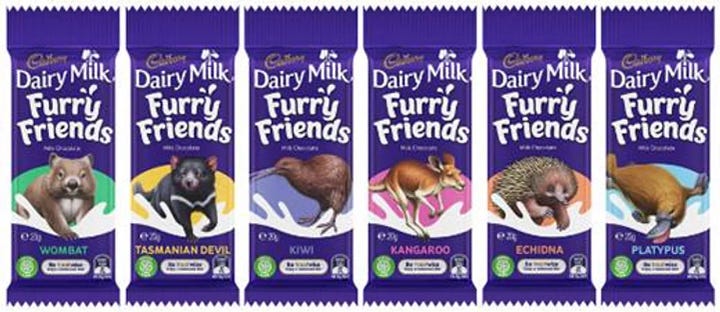Why are Australians obsessed with grippy Koalas?
The souvenir we can't stop giving away
If you spend long enough in Japan, you’ll learn about the crippling social obligation of ‘omiyage’.
Here’s how it works. If you go out of town, whether it be for work or leisure, it’s expected that you bring localised treats for your friends, family, neighbours and co-workers. Ideally, you choose something edible which can be shared. A box of individually-wrapped artisanal biscuits? Wonderful! Have them over tea. Some kind of local lolly? Great for people with kids. A particularly well-formed corn cob? Sure, I guess. This is also totally acceptable for some reason.
About five years ago, when I was studying a Japanese language diploma, I was forced into the world of obligatory, localised gift-giving. A part of the intensive one-year course was a study tour in a Hokkaido university where we would briefly stay with a local family. Our lecturers told us in no uncertain terms that a fair portion of our suitcase space would be reserved for gifts for our hosts.
I brought macadamia chocolates, Australian wine and fancy honeycomb straight from the beehive. I realised the last one was a mistake when the host family asked how they were supposed to eat it. I did not know. But that would be a strange thing to admit, so I mimed scooping it out with a spoon and hoped there would be no follow up questions. They nodded and I was grateful the whole thing seemed to be forgotten.
Then the next day, after dinner, the family brought out several little tea spoons and the honeycomb for us to share as a terrible dessert. They pretended to enjoy the texture of the chewy wax, clearly thinking they were taking part in a cultural exchange. You know, that quintessentially Australian activity of sharing a slab of honeycomb. I wasn’t even certain the wax was edible (it is thankfully).
Along with the omeyage for the host families, the lecturers also advised us to bring smaller gifts to hand out should the need arise. I brought some Furry Friends chocolate and, of course, some grippy koalas.


After the tour finished, I galavanted around Japan by myself, bequeathing chocolates and grippy koalas with reckless abandon. Anyone who gave me better-than-average service would receive a spontaneous present. This yielded a positive, if not slightly patronising, response. Not dissimilar to how a kindergarten teacher reacts when given a drawing by a student.
I found it quite nice.
Then, towards the end of the trip, I met a friend in Kyoto. He was a younger guy with superb English – he’d studied in America and had a lot of foreign friends.
After a day of sightseeing, I gave him some chocolates and – of course – a grippy koala in thanks. He accepted both cheerfully. He then held the little furry koala in his hand, studied it for a moment, looked up at me and asked:
“What is it with you Australians and these things?”
I was completely taken aback.
“I… have no idea, actually.”
“I always get given these by Australians, it’s really weird.”
He shrugged, put the koala into his pocket and waved goodbye as I got on the train.
From that moment onwards, it was like the wool had been pulled from my eyes. Everywhere I went, all I could see was grippy koalas. They were on the counters at cafes, attached to computer terminals in the JR office, on hotel desks.
Australians, thousands of them, were travelling through Japan, spreading grippy koalas like lice. Were they all like me? Acting like automatons programmed to dispense plastic crap to our defenceless neighbours? My motivations were a mystery even to me. Even now, the more I think about it the more confused I get.
To try and answer this question, I went about it in my usual manner. Spending far too much time reading articles on the internet.
But this yielded shockingly few results.
In my research, I couldn’t even find an answer to where the grippy koala comes from. They seemingly appeared out of nowhere sometime in the 1980s, were a brief fad in America, and can still be found in cheap souvenir stores around Australia. As for who was responsible for the original design? How they became a phenomenon? Why Australians still inflict them on the rest of the world? Why the rest of the world is too polite to ask us not to? I could find no answers.
This story isn’t over, though. If you have any leads on the grippy koala phenomenon, do get in touch. Being the super serious award-winning journalist I am, I’ll keep the pressure on this important story.
In the meantime, if you’re looking for omiyage, stick to chocolates and maybe leave the grippy koalas and honeycomb at home.



Hahahahaha this made me laugh. I was gifted one as a little kid in the 80s that I dropped in a lake on a school trip. I was so attached to it, my brother and mum went to the lake to get it back for me 😅
I am 100% guilty of this when bestowing Aussie things on the Americans 😅